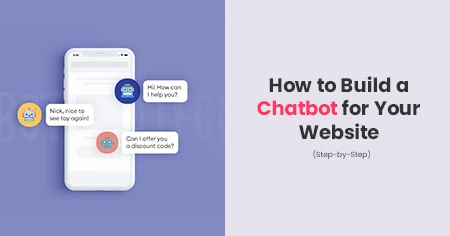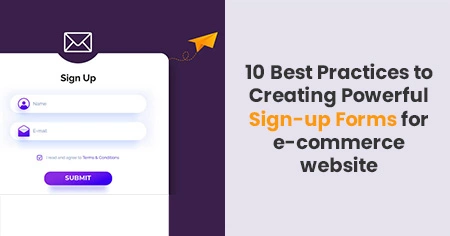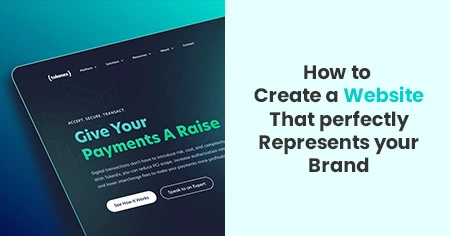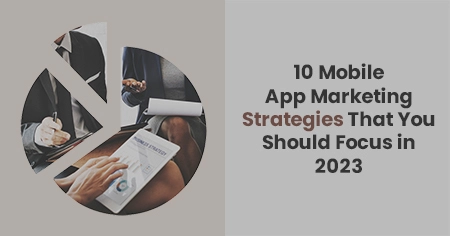Chatbots have become an essential tool in recent years because the website is now the primary source for providing online help and generating leads.
Chatbots are gaining popularity by the minute. With marketing automation, customer support automation, and automated lead generation, nearly every business today wants to install a chatbot on their website to automate lead nurturing, reduce wait time for help, and build stronger online relationships with visitors to win a conversion finally. In short, these little chatbots have already dominated the market.
Whether you are a marketing professional or a small company owner, this article will teach you how to build a chatbot for your website. Chatbots that are well designed and intelligent may assist you in automating your customer service process, engaging visitors, increasing sales, generating reliable leads, and reducing agent workload.
It is time to provide the consumer with what they want (personal and quick service) while also providing your website a fighting chance of exceeding the expectations of your website visitors.
The following statistics say, why should you build a chatbot for your website?
- Chatbots can handle over 70% of chats from start to finish without human intervention. Even more significant is that chatbots are available and active 24 hours a day, seven days a week.
- 80% of marketers use chatbots in some capacity, and more firms invest in them to improve the consumer experience.
- The worldwide chatbot market is expected to reach 454.8 million US dollars by 2027, up from 40.9 million dollars in 2018.
- They are critical for businesses such as e-commerce stores. For instance, a chatbot can handle 69% of customer inquiries from start to finish. This can result in a 30% decrease in customer service expenditures.
- Conduct multiple real-time conversations at the same time. Increase your sales by 67%.
- Around 40% of US consumers have used chatbots to interact with the retail industry, compared to 20% using bots for financial services.
- Can collect feedback with up to 90% response rate or recover abandoned shopping carts
What is a Chatbot?
A chatbot is a piece of conversational software that enables businesses to communicate with their audiences instantaneously and in a personalized manner without the use of automation—imagine getting consumer input in real time! Most people associate intelligent chatbots with AI. However, artificial intelligence is not required to create an intelligent, functional bot.
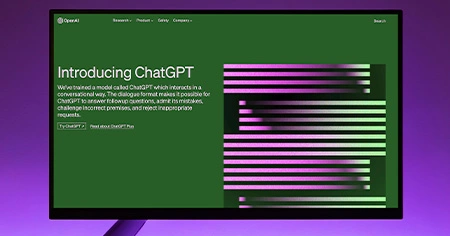
An AI chatbot is necessary for numerous reasons. For starters, it saves organizations time, money, and resources by automating mundane activities and aiding consumers with their queries around the clock.
AI chatbots are also more enjoyable to communicate with since they use natural language processing and conversational AI and understanding (NLU and NLP).
11 Easy Steps to Create Chatbot for Your Website
Create a chatbot for your website in two ways: from scratch or by using chatbot templates. When creating a bot from scratch, specific steps must be taken to ensure the website chatbot's success.
A step-by-step tutorial is always helpful when establishing a chatbot for your organization.
1. Define your goals
The chatbot you want to create for your website must address specific business requirements.
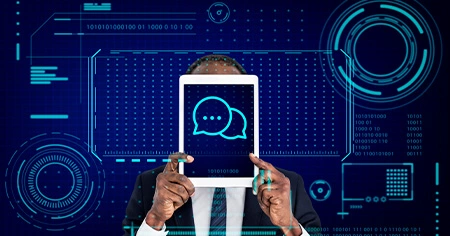
So, before you build one, you should define your needs and goals.
Establishing which business operations and tasks should be automated is also critical.
Before creating a bot, you should understand what AI chatbots can and cannot do. You must also understand the kind of challenges for which you seek answers.
2. Understand chatbot user needs
Once your goals have been established, it is time to concentrate on aligning with your target audience.
It would help if you created a bot user persona when building a chatbot for your websites. For instance, who will be using your bot?
Consider the user's objective when they first connect with the chatbot and how it supports that user while creating your chatbot user persona.
Try to condense your user profile into a single sentence. Then, consider adding some brief sentences to clarify the chatbot usage cases further.
3. Decide what type of chatbot is best for your websites
Before developing your chatbot, you must determine what type your company requires. What will your chatbot do? Are you seeking to increase lead generation and conversions, or do you want to provide better service to your clients around the clock? Of course, your personalized chatbot can fulfill several functions.
The benefits of a customer service chatbot include the following:

Chatbots for customer service enable you to assist 24 hours a day, seven days a week, by allowing your website visitors to self-serve and rapidly find solutions to their questions. In addition, it can assist in reducing the quantity of incoming email customer contacts and free up your team's time for more complex issues.
Customer support chatbots may also recommend new services to customers based on their data and extend an offer based on your current campaign or client data.
- When creating a support chatbot, keep the following points in mind:
- What is the bot's interaction with your live chat solution throughout online and offline hours?
- How can you manage these touchpoints when your chat is inaccessible outside of work hours?
- At what points in their journey do consumers seek the best possible assistance?
- Are there any frequently asked consumer questions?
The benefits of a lead-generation chatbot include the following:
Lead-generation chatbots can assist you in increasing conversions and sales. In addition, they may help you generate big leads while giving an exceptional customer experience.

Lead-generation chatbots can assist you in increasing conversions and sales. In addition, they may help you generate big leads while giving an exceptional customer experience.
These conversations between your target audience and your lead-generating chatbot tell you what your customer’s desire.
Lead-generating chatbots do effectively on sites with high intent. As a best practice, post your chatbot on service or price pages, for example.
It would help if you considered your bot's aim for lead-generating chatbots. For example, is it your intention to?
- People be informed?
- Concentrate on starting mini-conversions.
- Qualifying and directing visitors to a sales chat?
4. Determining your chatbot's key performance indicators (KPIs).
Determining KPIs enables you to assess the efficiency of your chatbot using the most critical data points. This will help you stay focused on your chatbot goals.

Consider the following while developing your chatbot KPIs:
- How will you know if the chatbot is successful?
- What are you planning to measure?
- What results do you want to track?
In general, your KPIs will indicate the goal of the chatbot interaction, that is, what action you want the user to take.
These KPIs include the number of CTAs clicked, buttons, forms filled out, link clicks, and online purchases generated by the chatbot.
5. Give your chatbot a personality.
You may have fun creating a chatbot for your website's personality now that you've identified your user persona. Knowing your users allows you to choose the tone of speech and language your chatbot will employ.
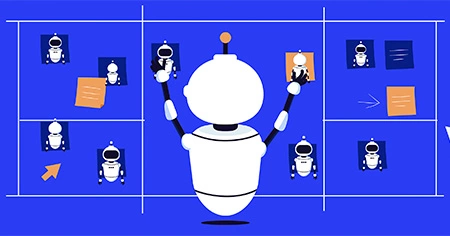
Consider your chatbot to reflect your company; you'll want to balance brand consistency and giving consumers what they desire.
How do you instill personality in a chatbot? To begin, try developing your chatbot with the following personality features in mind:
- Emoji’s associated with the brand
- Inviting images or graphics to support the content
- Informal language, maybe even industrial jargon
- Image of a cheerful avatar
- Inventive name for your bot
6. Create your conversation flow.
The key to creating pleasant but helpful chatbot conversation flows is to establish many diverse intents (even if they're identical) and keep your replies brief.
Creating several intents, even if the answer is the same, can assist your AI chatbot in improving its context comprehension. Your clients may freely ask queries, and the chatbot will rarely need to rely on your humans.
It's best to create a knowledge base, such as Userlike's AI Automation Hub. That way, you may create your FAQs and other helpful information, which your chatbot will use as an interactive FAQ website and even your contact form.
Due to interactions, your knowledge base will increase and improve in accuracy. This means faster resolutions, happier consumers, and more time for your agents to focus on more severe issues.
7. Design your bot
It's time to get your hands filthy, or at least as dirty as they'll get while building a chatbot for the first time.You may now implement your concept and start working on your bot!
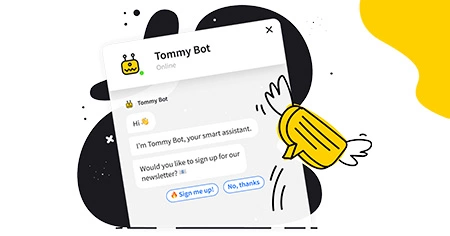
When designing a chatbot for your website, you can use a built-in design platform to create a bot from scratch using drag-and-drop elements or a bot template.
When designing your chatbot, your priorities should be:
- Create your button and element actions.
- Create or change your views
- Set your objectives
- Change the fonts and colors
8. Test and improve your AI chatbot
Run technical and user tests on your chatbot when you're finished building. A soft launch of your chatbot on your website will allow you to analyze its performance while letting your colleagues and a small group of customers test it.
Run technical and user tests on your chatbot when you're finished building. A soft launch of your chatbot on your website will allow you to analyze its performance while letting your colleagues and a small group of customers test it.
In User like, you add your chatbot in the same way that you would a human agent. Then, when you're finished customizing your bot, you can publish it by setting its parameters in the dashboard.
Please double-check:
- Are your responses clear?
- Do images and other media appear?
- Do all of your links and redirects work?
- Is it simple to escalate to an agent?
- Make sure to test everything!
9. Target your chatbots
Currently, we've discussed what (chatbots), who (your company + the website visitor), where (on your website), and why (to guide the visitor), but not when and how.
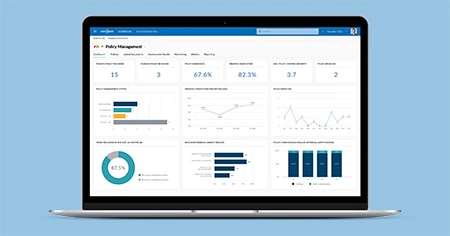
Setting up your chatbot's goal rules will help you answer the how and when questions in the building-a-chatbot formula.
Several automated triggers could activate your chatbot. But, of course, it is up to you whether you want to target your bot using many parameters or just one.
Need some ideas for chatbot targeting options for your website? Take a few of these ideas and base your chatbot triggers on them:
- The visitor's geographic location
- Which page is the visitor on, and where they came from (i.e., campaign URL, previous page, traffic source)
- The number of times they have visited your website
- What device they are using ( mobile, desktop, or tablet)
Your bots will be more sophisticated about who they target and which automated message to send once you've defined your chatbot targeting guidelines.
10. Launch your AI chatbot
Place your AI chatbot on the sites and channels that make the most sense for its function once it has passed testing. For example, if you create a customer service chatbot, including it on your website's contact page and significant popular messaging channels such as WhatsApp is sensible.
It would help if you employed your bot across your website to increase leads and sales. Then it can approach customers proactively to prevent them from leaving your website or shopping cart.
11. Measure and optimize
Remember in the fourth stage when you determined your KPIs? It's time to start tracking your bot's performance now that it's running. This will help you optimize your content and continuously improve the outcomes of your chatbot.
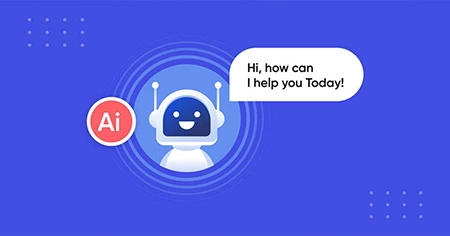
Here are the following chatbot metrics to keep an eye on:
Goal Completion: How successfully does your bot accomplish a specific activity? How many users achieve your predefined goal?
Chatbot activity: How frequently is chatbot activity used?
Bounce rate: What percentage of users leave without taking the necessary action? This enables you to detect when customers depart the bot journey and discover potential bottlenecks in your bot.
It would be best if you collect user feedback on bot performance in addition to measuring quantitative results that have a direct impact on your business:
- Are they content with the service?
- What do your chatbot's users think of it?
- Are they making full use of the tool?
Conclusion
Chatbots are increasingly an essential aspect of commercial communication. You may gain a competitive advantage by automating specific marketing, support, and sales operations. Furthermore, you can quickly build a chatbot from scratch and improve your company's efficiency.




